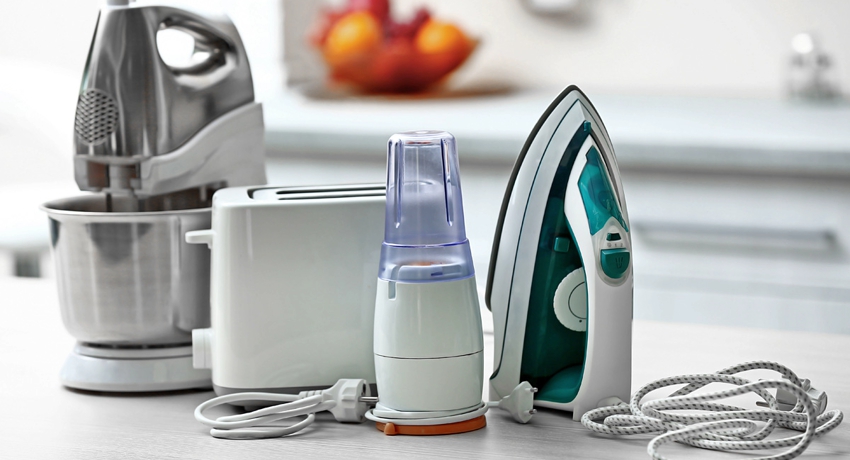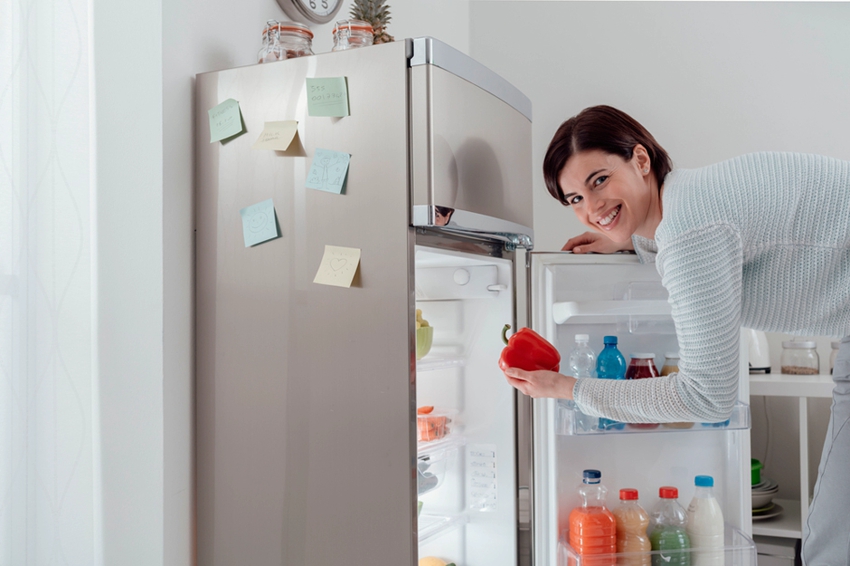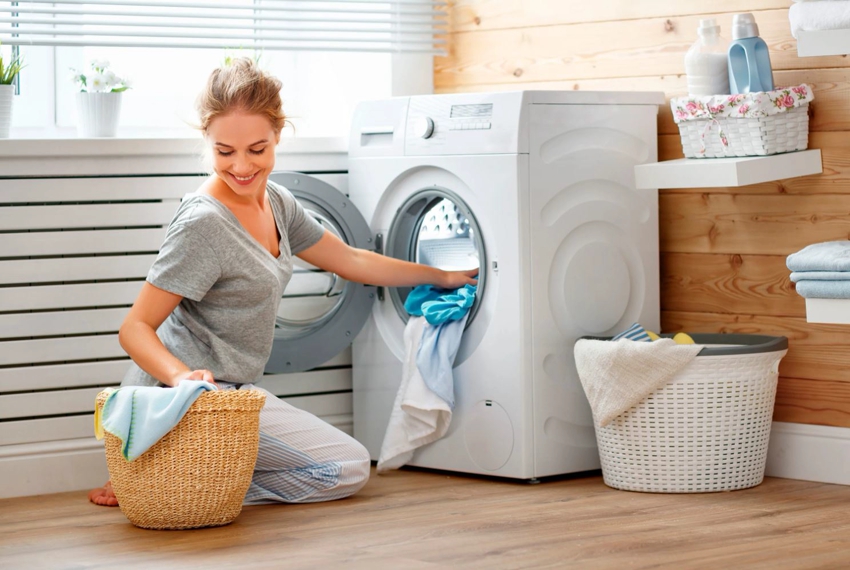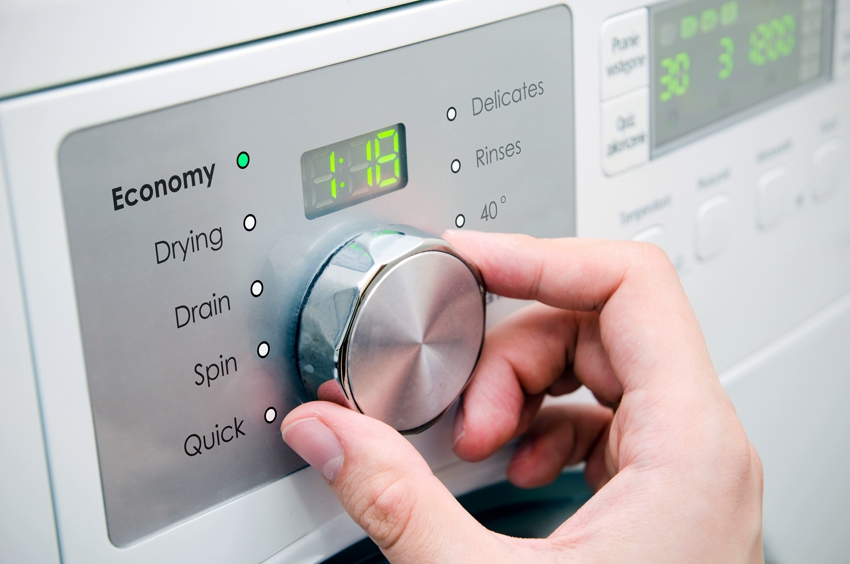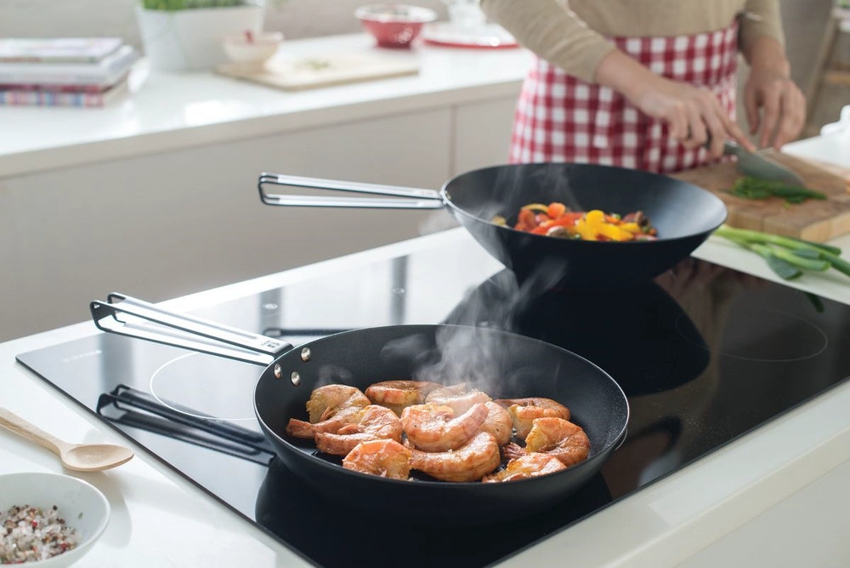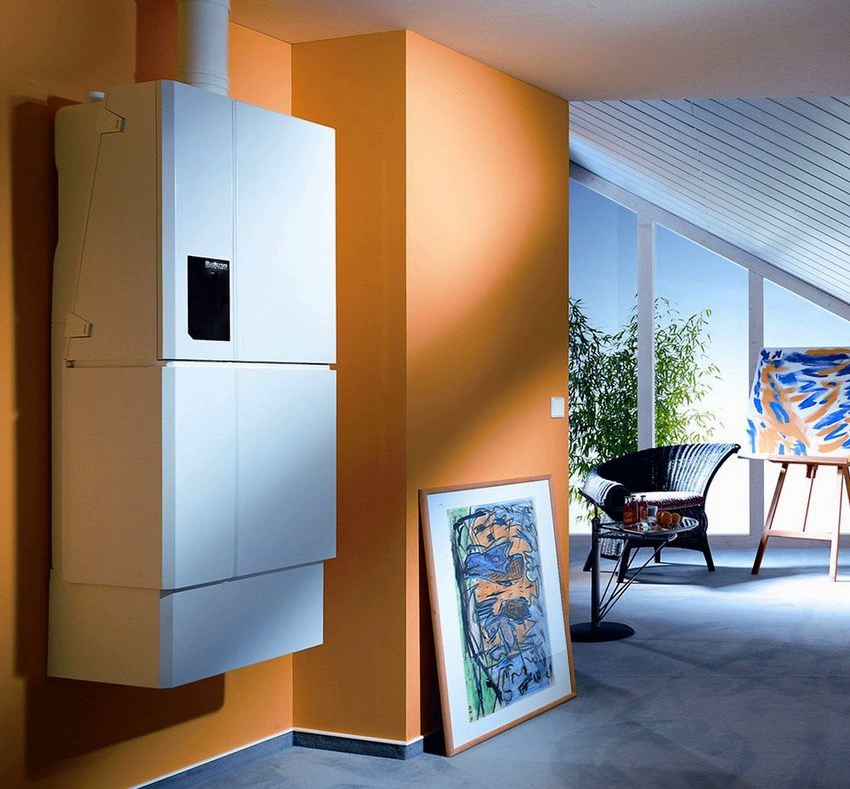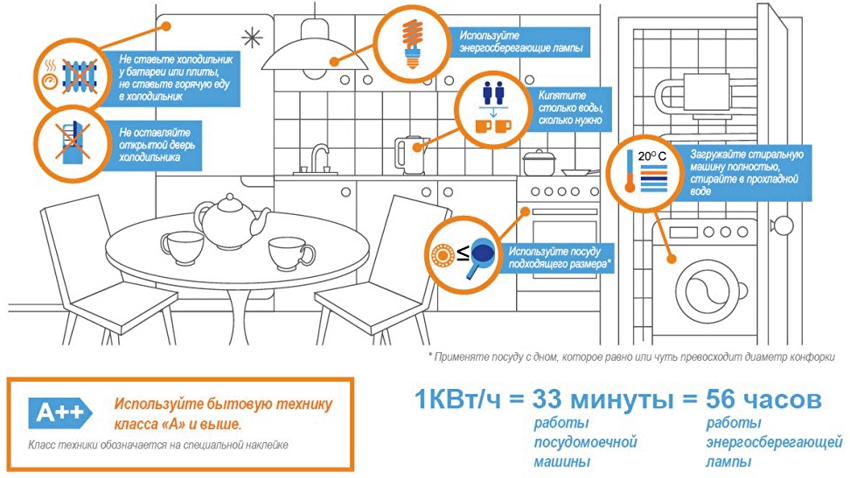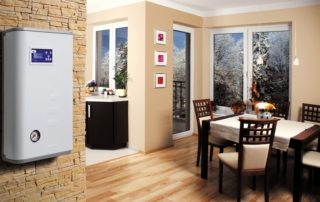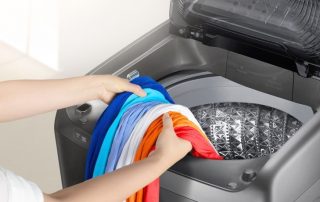The annual increase in the cost of electricity makes users think about methods of controlling its consumption and ways of saving. The instructions for any technique indicate the power of the device. However, this is an average value and may vary depending on certain factors. How to correctly calculate the electricity consumption of household appliances can be found in this article.
Content [Hide]
- 1 1 kW how many watts: the concept of physical quantities
- 2 Total power in W: how many kW of energy are consumed by household appliances
- 2.1 Household appliances energy consumption table
- 2.2 Refrigerator: how many watts per hour
- 2.3 How to calculate your TV's electricity consumption
- 2.4 Washing machine operation: how many kilowatts the device consumes
- 2.5 Electricity consumption of an electric stove
- 2.6 How much does an electric boiler consume
- 2.7 Electricity consumption of air conditioner
- 2.8 How much electricity does the kettle consume
- 3 How to reduce the energy consumption of household appliances
1 kW how many watts: the concept of physical quantities
All household appliances use electricity as a power source. The technical passport of each device indicates the rated power without taking into account the conditions and modes of its operation. For low-power devices, this parameter is indicated in watts, and for more powerful devices, the value of kilowatts is used. Device power indicates the rate at which power is converted or consumed. This is the relationship of work to the time during which it was performed. The power unit got its name from the Irish inventor James Watt, who was the creator of the first steam engine.
The use of a watt is not limited to electrical engineering. This unit is used to determine the torque of power plants, the flow of acoustic and thermal energy, the intensity of ionizing radiation. To understand whether 1 W is a lot or a little, you can consider such examples. Mobile phone transmitters have a power of 1 W. For incandescent lamps, this parameter is 25-100 W, for a refrigerator or TV 50-55 W, a vacuum cleaner - 1000 W, and for a washing machine - 2500 W.
In order not to use many zeros, you should know how many watts are in 1 kW. The prefix "kilo" is a multiple of one thousand. It involves multiplying the value by one thousand. Thus, 1 kW in W is 1000.
There is also the concept of vilowatt hour (kWh). This is a value that indicates the amount of electrical energy that the device consumes per unit of time. In other words, we can say that kWh is the amount of work that a device does in one hour.To understand the dependence of these quantities, consider an example. The power consumption of the TV is 200 W. If it works for 1 hour, the device will consume 200 W * 1 hour = 200 W * h. If it works for 3 hours, then during this time it will spend 200 W * 3 hours = 600 W * h.
Total power in W: how many kW of energy are consumed by household appliances
Any apartment is equipped with the necessary set of household appliances and electrical equipment. Each type of technology is characterized by individual technical characteristics, including power and energy consumption. The total value of all these factors determines the total amount of consumed electrical energy, which will be different for each family.
In order to plan possible costs, some owners resort to compiling a table of electricity consumption by household appliances per hour, where they indicate the name of the consumer, its power and duration of operation throughout the day. Information on the total consumption of electricity by household appliances and lighting elements is necessary for the installation of switching and protective equipment and the selection of the cross-section of wires for electrical wiring.
Note! To determine the total power, the corresponding consumer values must be converted into one unit of measurement, so it is important to know how many W is in 1 kW.
From the table below, you can conclude which household appliances consume more electricity. These include a lighting system, refrigerator, TV, computer, washing machine, electric kettle and iron. The total value averages 120-180 kW per month. Additional costs include the use of small household appliances in the form of a hair dryer, coffee maker, combine, chargers and other elements that provide the required level of comfort. In the summer period, the use of an air conditioner is also taken into account, and in winter - oil electric heaters, which add 60-100 kW.
Household appliances energy consumption table
For each home, the number of electrical devices, the value of their electricity consumption and the duration of operation will differ. The following table of energy consumption of household appliances contains averaged information:
| Device name | power, kWt | Working hours per day, h | Consumption per day, kW * h | Consumption per month, kW * h |
| Fridge | 0,15-0,6 | 24 | 3,6-8,6 | 10,8-25,8 |
| Lighting (10 x 20 W lamps) | 0,020 | 5 | 0,1 | 3 |
| Washer | 1-2,2 | 1 | 1-2,2 | 20-30 |
| Vacuum cleaner | 0,65-2,2 | 15 minutes | 0,16-0,55 | 1,6-5,5 |
| TV set | 0,1-0,3 | 5 | 0,5-1,5 | 15-30 |
| Microwave | 1,5 | 30 minutes | 0,75 | 10-15 |
| Electric kettle | 0,7-3 | 15 minutes | 0,25-0,75 | 7,5-16,5 |
| A computer | 0,1-0,2 | 5 | 0,5-1 | 7-20 |
| Iron | 1,1 | 15 | 0,3 | 5-8 |
| Dishwasher | 0,5-2,8 | 1 | 0,5-2,8 | 7,5-15 |
| Multicooker | 0,2-2,4 | 1 | 0,2-2,4 | 2-24 |
| Food processor | 0,2-2,0 | 15 minutes | 0,05-0,5 | 0,5-3 |
| Air conditioning | 0,7-1,3 | 7 | 3,5-8 | 15-35 |
| Hair dryer | 1,2-1,5 | 15 minutes | 0,3-0,4 | 5-7 |
| Heater | 1,5 | 5 | 7,5 | 75 |
| Electric stove | 2-8,5 | 3 | 5-10 | 30-150 |
| Coffee maker | 1,5-3,5 | 15 minutes | 0,3-0,8 | 5-10 |
| Hood | 0,1-0,5 | 3 | 0,3-1,5 | 3-4,5 |
Refrigerator: how many watts per hour
When asked which electrical appliances consume the most energy, the refrigerator will be the first on the list. Such a device works around the clock. The actual energy consumption of the refrigerator is calculated based on the international energy efficiency classification of devices. This parameter is indicated by a letter with a certain number of pluses, the more there are, the lower the level of electricity use.
The energy efficiency classification of a household appliance is as follows:
- A ++ - the highest class with maximum energy saving. Electricity consumption is 30% of the standard value;
- A + - energy consumption - 30-42% of the standard;
- A - energy consumption - 42-55% of the standard;
- B - energy consumption - 55-75% of the standard;
- С - energy consumption - 75-90% of the standard;
- D - energy consumption - 90-100% of the standard;
- E - energy consumption - 100-110% of the standard;
- F - energy consumption - 110-125% of the standard.
However, the energy efficiency parameter is very average.Since the amount of electricity consumed by the refrigerator is affected by its operating mode, load, the number of door openings.
Note! The instructions for the refrigerator indicate the energy efficiency class and the amount of electricity it consumes per hour.
Annual energy consumption corresponds to 220-460 kW. It is impossible to obtain an accurate result for a table of electricity consumption per day or month by simply dividing this value. Since energy consumption is influenced by a number of factors, such as freezing capacity, ambient temperature, filling level of food.
To reduce the energy consumption of the refrigerator, it is necessary to operate the device correctly, do not leave the internal space unfilled when it is on, do not open the door for a long time, do not put hot food, check the condition of the seals, ensure there is a gap between the refrigerator and the wall, regularly defrost, wash and dry the unit.
How to calculate your TV's electricity consumption
The TV is an indispensable element of household appliances in every home. Often, the owners install several copies for each room. Devices can be of several types: models with a cathode ray tube, LED, LSD or plasma TVs. The power consumption of the device is influenced by its type, screen size, color, brightness, white and black balance, active work time, duration of stay in sleep mode. Based on the table of electricity consumption by household appliances, the TV uses an average of 0.1-0.3 kW.
The power of cathode ray tube televisions in watts is 60-100 watts per hour. On average, he can work about 5 hours a day. Monthly consumption reaches 15 kW. This is how much electricity will be spent on its active work. The TV also consumes 2-3 watts per hour in standby mode when plugged in. The total energy consumption can be 16.5-17.5 kW per month.
The power consumption of LED or LSD models directly depends on the screen size. For example, a 32-inch LSD TV will consume 45-55 watts per hour in operation, and 1 watt in standby. The total electricity consumption per month is 6.7-9 kW. LED models consume 35-40% less electricity on average. In active mode, a 42-inch TV will use 80-100 watts, in sleep mode - 0.3 watts. The total consumption per month will be 15-20 kW.
Plasma TVs have good color reproduction. The power of the TV in kW is 0.15-0.19 in active mode, and 120 W / day in sleep mode. The total consumption for the month can be 30-35 kW. To save energy, you should unplug the plug from the socket, adjust the brightness level correctly depending on the time of day, and set the timer for automatic shutdown.
Washing machine operation: how many kilowatts the device consumes
Calculating how many watts a washing machine spends on one wash cycle follows from the calculation of its brand, model and technical characteristics. Energy is spent on the operation of the electric motor, which can be in the range of 400-800 W, heating element - 2 kW, pump for draining water - 40 W, control system in standby mode - 3-10 W. This indicator directly depends on the power consumption.
The washing mode also affects the total consumption. The lower the water temperature, the operating time of the device and the number of revolutions, the less the machine will consume energy. Washing machines have an energy efficiency class that determines the amount of electricity required:
- class A + - energy consumption 0.17 kW * h;
- class A - 0.17-0.19 kWh;
- class B - 0.19-0.23 kWh;
- class C - 0.23-0.27 kWh;
- class D - 0.27-0.31 kWh;
- class E - 0.31-0.35 kWh;
- class F - 0.35-0.39 kWh;
- class G - more than 0.39 kWh.
Based on the class, model, mode, load and water temperature, the machine consumes 300-1600 W * h in one wash cycle.
In order to reduce the amount of electricity consumed, it is necessary to choose the optimal mode, which will depend on the degree of contamination of the laundry and its composition. A significant part of the electricity is spent on heating water and spinning. The machine must be fully loaded, since the units cannot determine the relationship between the amount of laundry and the value of the electricity consumption per cycle. The machine should be cleaned at least once every six months using special cleaning agents.
Electricity consumption of an electric stove
Electric cookers are very popular with consumers. The amount of electricity consumed by the appliance is influenced by the type of hob, which can be induction or heating, the diameter of the burners, the power and functionality of the device.
Note! An induction surface consumes less electricity than an electrical one.
The power of a household appliance directly depends on the number of burners and their diameter, which can be 14.5; 18 and 20. Accordingly, the power consumption is 1; 1.5 and 2 kW.
The oven power corresponds to 1.8-4 kW. The minimum energy consumption per cooking zone is 1 kW. The maximum power of the electric stove is calculated taking into account the number of simultaneously operating burners, the operating mode of the oven. It can be 5-8.5 kW, as can be seen from the table of the power of household appliances and their energy consumption.
To save energy when operating an electric stove, you should adhere to some recommendations:
- it is necessary to choose the correct diameter of the pan for a specific burner;
- it is better to use dishes with a flat bottom;
- to save heat loss, cover the pot with a lid.
How much does an electric boiler consume
Electric boilers are installed in homes for heating and water heating. However, behind the simplicity of the design and ease of operation, there is a large consumption of electricity. Models of electric boilers differ in power, design, number of circuits and method of heating the coolant (heating elements, electrode or induction heating). Double-circuit boilers are used for heating and water heating. Boiler models are more economical than flowing ones.
The choice of the boiler is carried out on the basis of the required power, which it must have in order to provide heating of the premises of a given area. When calculating, it should be borne in mind that kW is the minimum power of the device required to heat 10 square meters of room area. Additionally, climatic conditions, the presence of additional insulation, the condition of doors, windows, floors and the presence of cracks in them, the thermal conductivity of the walls are taken into account.
Important! The final power of the electric boiler is influenced by the method of heating the coolant, while the electrode devices are able to heat a large area, while spending less electricity.
To determine the power consumption of the electric boiler, it is necessary to calculate the mode of its operation. It should be borne in mind that the device will operate at full capacity for half the season. The calculation takes into account the duration of his work per day. Thus, to determine the total electricity consumption per day, it is necessary to multiply the number of hours by the power of the device.
To reduce the cost of energy consumption of the boiler, a two-phase meter should be installed, according to which the calculation of electricity at night is carried out at a reduced tariff. It will also save the use of an automatic control device for electrical appliances, which will control the operation of the device based on the time of day.
Electricity consumption of air conditioner
The consumption of electricity by the air conditioner directly depends on the mode of its operation. The device converts the temperature using a heat pump, the operation of which is ensured by pumping the coolant, freon by the compressor, and changing the pressure in the lines. The heat carrier, depending on the mode of its operation (cooling or heating), passes from a liquid to a gaseous state in the outdoor or indoor unit.
The device enters standby mode after reaching the set temperature. When it goes beyond the established norms, the air conditioner is switched on again. The split system works periodically without consuming electricity in standby mode. Most of the energy is used to run the compressor and then the fan.
The air conditioner is selected based on the heat output, which is calculated in British thermal units. Translated into kilowatts, the following values are obtained:
- 7 - 2 kW;
- 9 - 2.5 kW;
- 12 - 3.5 kW;
- 18 - 5 kW.
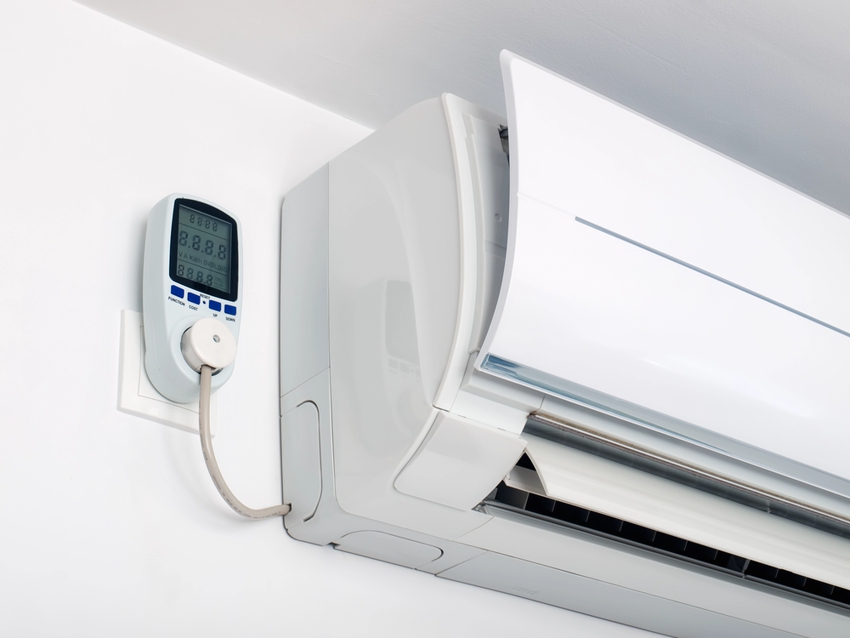
The amount of energy consumed by the air conditioner will depend on the season and room temperature.
Helpful advice! To select an air conditioner based on heat output, you need to divide the area of the room by 10.
Heat output should not be confused with electrical power. To calculate the electricity consumption per hour, the refrigerating capacity should be divided by 3. As the above table of the power consumption of household electrical appliances suggests, air conditioners spend 0.7-1.3 kW per hour of active operation, which depends on the type of compressor.
Related article:
Motion sensors to turn on lights: a surefire way to save energy
Description of the device. Varieties of devices according to different criteria. Sensor installation algorithm. Popular models. Lamp with DD.
How much electricity does the kettle consume
An electric kettle is a convenient household appliance that can provide the owners with boiling water in a matter of minutes.
It is necessary to calculate how many kilowatts a kettle consumes, taking into account the power of the device and the maximum volume of liquid that it can bring to a boil. The larger the displacement of the device, the longer it will take to heat the water, and the amount of electricity consumed accordingly increases. On the other hand, the high power of the kettle makes it work fast. However, it requires a sufficient amount of electricity.
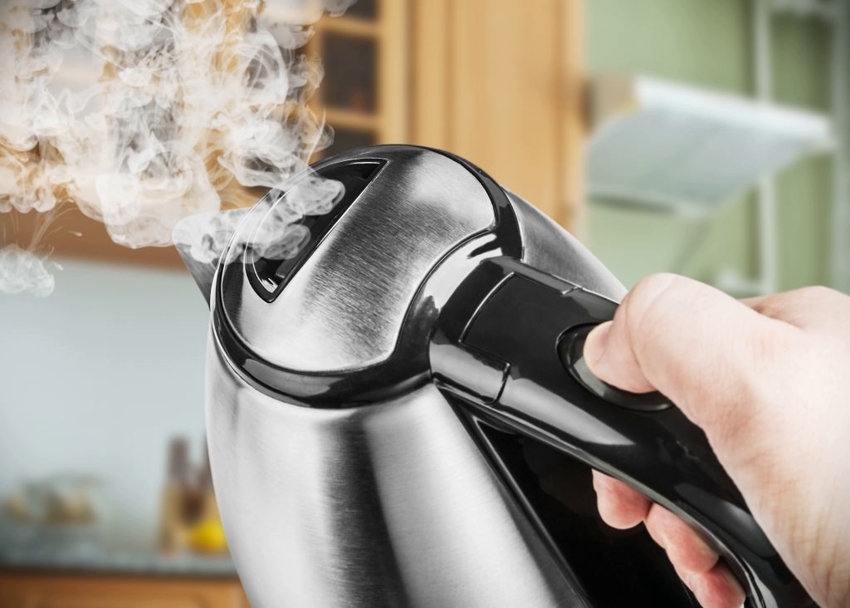
All electric kettles are different in their parameters and, accordingly, in the level of energy consumption
To calculate how much the kettle consumes, the following calculations should be performed:
- the power of the device is taken from the passport;
- the time it takes to boil water in the kettle is calculated;
- the consumption of electricity per unit of time is determined;
- the resulting value should be multiplied by the number of times the water is boiled;
- monthly electricity consumption is determined.
Based on the table, the power of the electrical appliance is in the range of 700-3000 W, which depends on the volume of the bowl, body material, displacement, type of heating element, chemical composition of water. The heating element can be open (spiral) or closed (plate) type. The first option provides a high rate of water heating, and accordingly uses less energy.
The power consumption of the device is also influenced by the material of the housing. In a metal bowl, water heats up faster.However, additional electricity is consumed to heat the case. Glass also heats up quickly, but retains heat worse. Ceramics have a slow heating rate, but the water in the kettle will stay hot for a long time.
Important! Boiling water in an electric kettle is less costly than using an electric stove.
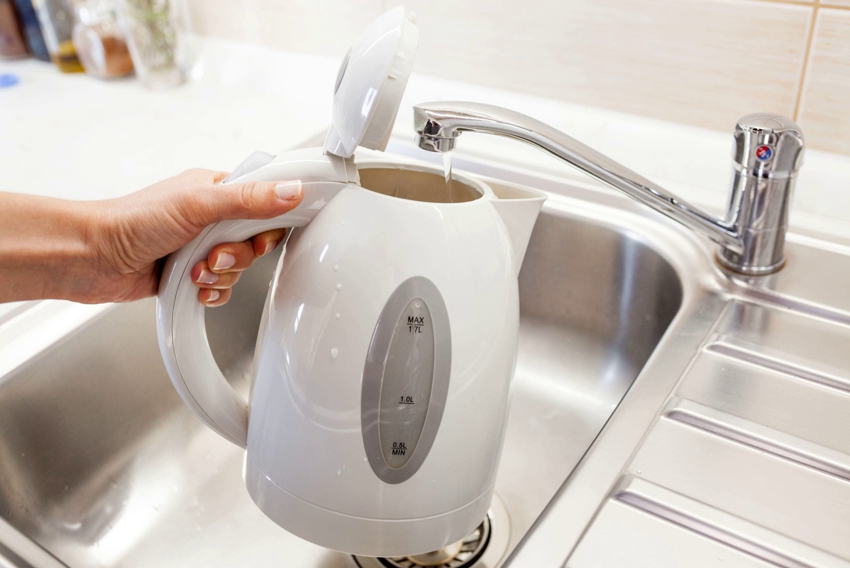
If you fill the kettle with a minimum amount of water without a reserve, then you can reduce the waste of both water and electricity
To reduce the energy consumption of the kettle, unplug the appliance when not in use. Water of the required volume should be poured into it, without a reserve. The condition of the heating element should be monitored by regularly descaling it.
How to reduce the energy consumption of household appliances
To reduce the consumption of electrical energy, which is consumed by household appliances, there are several effective techniques. A good result is the use of an energy-saving refrigerator that can operate in this mode all year round, regardless of weather conditions.
The lighting system in the house is better organized using modern LED or energy-saving lamps. Their installation will not only save energy, they also have a longer period of operation. A good effect is provided by the installation of local lighting in the kitchen, in the bedroom, in the hallway, in the living room, which also saves energy.
Important! The use of extension cords and adapters increases power consumption.
Refrigerators and freezers should be defrosted in time. The presence of excess ice on the inner walls of the devices increases power consumption.
While the computer is running, you can select the optimal power consumption mode for it. It will automatically turn off when it is inactive for a specified time. When you exit sleep mode, you will need much less energy compared to normal switching on.
Helpful advice! It will be possible to reduce electricity costs when installing a multi-tariff meter, the night and day readings of which are calculated at different rates. The cost of electricity is lower at night.
When heating devices are in operation, heat-reflecting screens can be used, which help to increase heat transfer and reduce electricity consumption.
When choosing household appliances, you should take into account how many watts (kilowatts) the device consumes per hour. It is better to give preference to economical devices that will meet the stated requirements, while saving the energy required for their operation.
